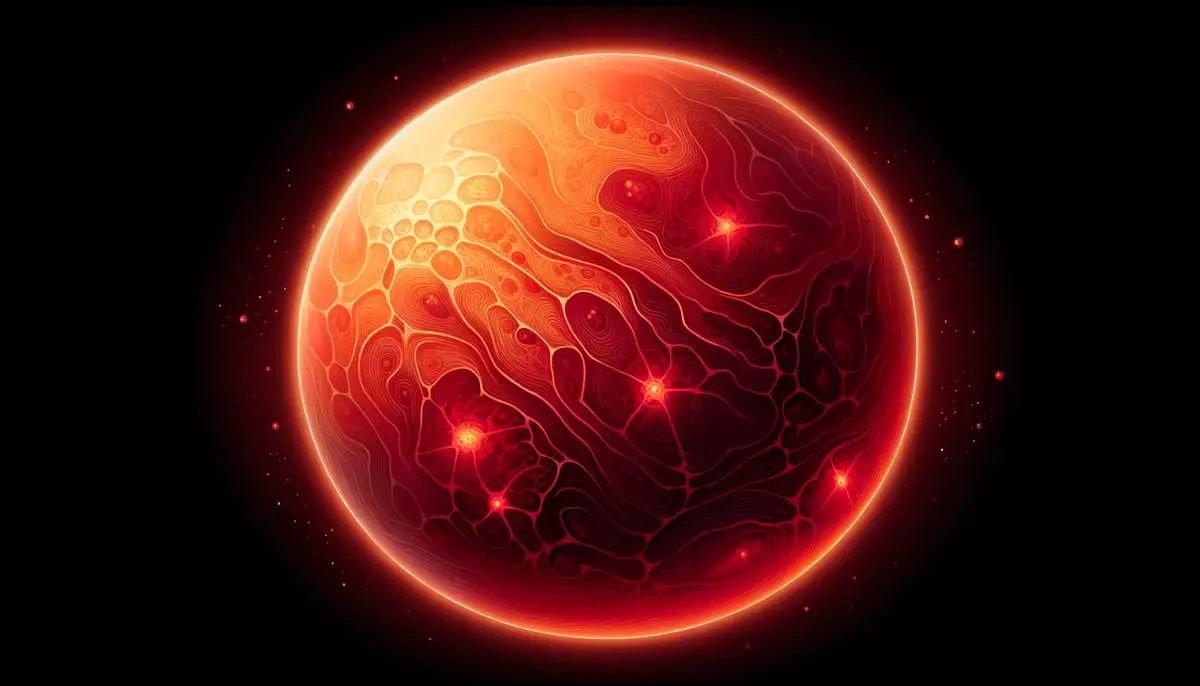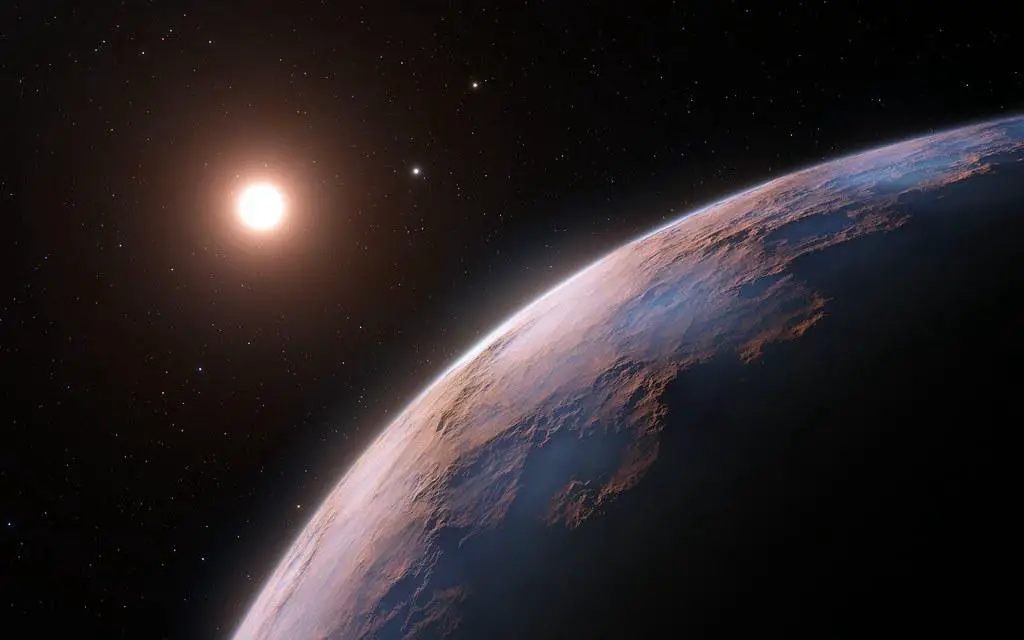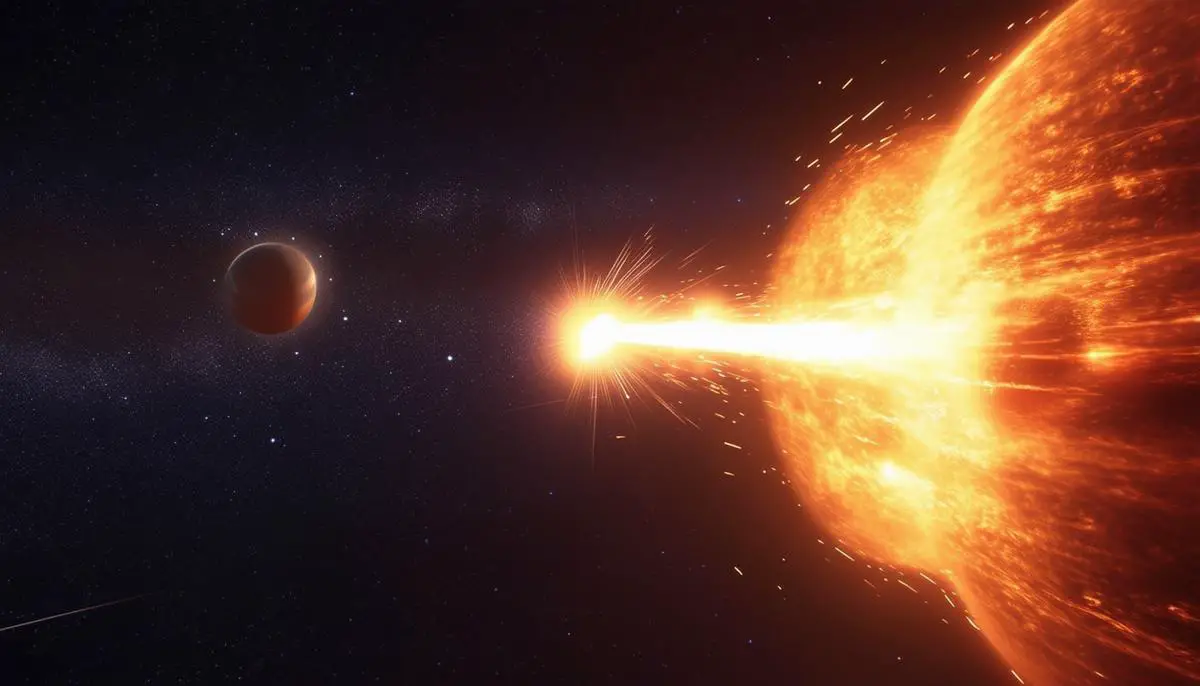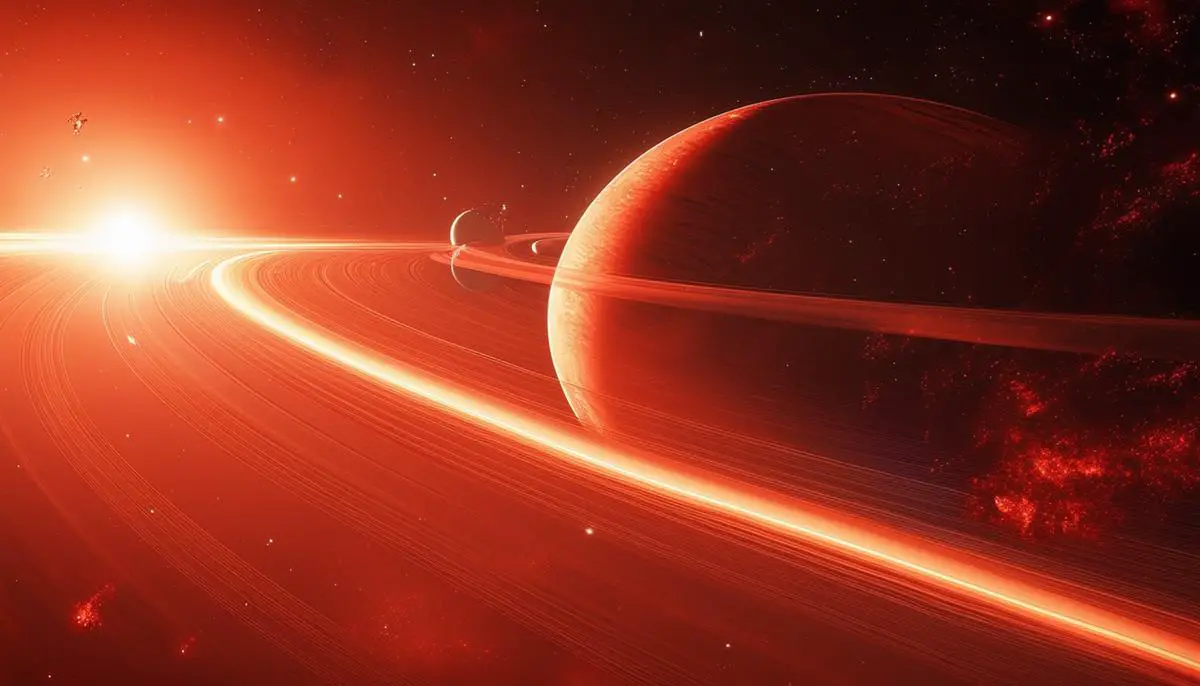Proxima Centauri, our closest stellar neighbor, offers an intriguing case study in stellar behavior and its implications for exoplanet habitability. With its intense starspot cycles and powerful flares, this red dwarf challenges our understanding of magnetic fields and atmospheric retention on orbiting planets like Proxima b. As we examine Proxima Centauri's activity, we gain insights that could reshape our search for extraterrestrial life.
Proxima Centauri's Stellar Activity
Proxima Centauri exhibits a much more intense cycle of starspots compared to our Sun. Its starspot cycle lasts seven years, with spots covering over 20% of its surface during peak activity, significantly more than the Sun's less than 1% coverage. These magnetic fields could instigate flares and stellar winds, potentially altering the fate of orbiting worlds.
This behavior challenges previous assumptions about red dwarf stars. Given their smaller size and cooler temperatures, they weren't expected to exhibit such activity cycles. While the Sun's magnetic fields result from a division between its outer convective zone and a relatively calmer interior, Proxima Centauri's convective processes appear more holistic.
These findings push the boundaries of our understanding of magnetic fields and starspot generation in stars. For Proxima b, this magnetic activity could have significant implications. Theory suggests that Proxima Centauri's flares and stellar winds could continually batter the planet, potentially stripping away its protective atmosphere.
Current direct observations of Proxima b are limited. Until advanced instruments like the James Webb Space Telescope come online, we rely on a blend of ground-based and space-based tools to scrutinize the star's behavior. Instruments like Swift, Chandra, and XMM-Newton have provided crucial insights into this enigmatic neighbor.
Proxima b's tight 11-day orbit around a star just 0.14 times the radius of our Sun, combined with its exposure to intense stellar emissions, presents a complex scenario for potential habitability. As we continue to analyze Proxima Centauri, we gain valuable insights into star-planet interactions and their implications for the search for extraterrestrial life.

Detection of Artificial Lights
Advanced technologies might one day allow us to discern artificial lights that could hint at an alien civilization on Proxima b. The James Webb Space Telescope (JWST) and the forthcoming LUVOIR (Large UV/Optical/IR Surveyor) are at the forefront of this investigative endeavor.
Researchers Elisa Tabor and Avi Loeb at Harvard have led studies to ascertain the feasibility of detecting artificial lighting on Proxima b. Given the presumed tidal locking of Proxima b, artificial illumination on the nightside would be necessary to sustain a technological culture.
Using the Exoplanet Analytic Reflected Lightcurve (EARL) software and the JWST Exposure Time Calculator (ETC), they modeled scenarios where artificial lighting mimics Earth's LED spectrum and where it's significantly narrowed and intensified.
Their calculations suggest that JWST could detect artificial LED lighting that constitutes 5% of the stellar power Proxima b receives from its star, with an 85% confidence level. This detection would rely on maximizing the capabilities of JWST's Near InfraRed Spectrograph (NIRSpec).
The LUVOIR mission, potentially launching by 2035, promises even greater precision in scanning Proxima b's surface for artificial lights. It's anticipated that LUVOIR could confirm or rule out the presence of significant artificial illumination through high-precision observations.
Detection of such artificial lights would profoundly alter our understanding of extraterrestrial life. These efforts underscore the technical prowess and imaginative foresight of the scientific community as we push the boundaries of what's possible in astrobiology.
While we await developments from JWST and prepare for LUVOIR's future contributions, the prospect of identifying technosignatures keeps the cosmos brimming with possibilities. Every advanced observation, model, and hypothesis brings us closer to potentially unveiling the presence of intelligent life beyond Earth.
Proxima b's Mass and Composition
Recent advances in spectrographic technology have provided a clearer picture of Proxima b's mass and composition. The Echelle Spectrograph for Rocky Exoplanet and Stable Spectroscopic Observations (ESPRESSO) on the European Southern Observatory's Very Large Telescope has refined our measurements of this nearby exoplanet. New data shows Proxima b's mass to be just 17% more than Earth's, a significant refinement from earlier estimates.
ESPRESSO's superior sensitivity and precision have allowed astronomers to gauge the planet's characteristics with unprecedented accuracy. With a precision of over one-tenth of Earth's mass, it provides a much clearer glimpse into Proxima b's potential habitability.
Proxima b's placement in Proxima Centauri's habitable zone makes it particularly intriguing. This location, combined with its Earth-like mass, suggests it could support a rocky terrain and potentially liquid water on its surface – crucial ingredients for life as we know it.
However, significant challenges remain. Proxima b's close proximity to its star subjects it to intense stellar flares and radiation, which might erode its atmosphere. The planet would need a strong magnetic field to shield it from such punitive stellar activity to maintain a stable, life-supporting environment.
These discoveries have broader implications for scientific endeavors. Each step closer to understanding Proxima b's composition and mass provides more refined data for models predicting the planet's capacity to support life. This integration of concrete measurements and theoretical modeling is essential for navigating between optimistic habitable scenarios and the realities imposed by Proxima Centauri's energetic outbursts.
The work enabled by ESPRESSO demonstrates the significant advancements in exoplanet exploration technology. With even more sophisticated instruments like LUVOIR on the horizon, we anticipate even more precise observations, potentially discerning details about Proxima b's atmosphere and the presence of biosignature gases.
As we uncover more about Proxima b's characteristics, we stand on the precipice of potential monumental discoveries. These advancements not only underscore the planet's similarity to Earth but open new avenues for scientific inquiry. What we learn from Proxima b could shape our understanding of exoplanets and our quest to unravel the mysteries of life beyond our solar system.

Impact of Red Dwarf Flares
The intense flares from Proxima Centauri significantly affect Proxima b's habitability. Red dwarf stars like Proxima Centauri release powerful "superflares" that can be thousands of times more energetic than the largest flares from our Sun. For Proxima b, this bombardment could drastically impact its atmosphere and potential to sustain life.
Atmospheric erosion is a primary concern. The energy from superflares can ionize atmospheric particles, stripping away molecules and allowing lighter gases to escape into space. Over time, this continuous erosion could deplete the planet's atmosphere, making it increasingly difficult to sustain liquid water and life as we know it.
Radiation levels from these flares exacerbate the issue. Proxima Centauri produces copious amounts of high-energy radiation, especially in ultraviolet (UV) and X-ray wavelengths. This radiation could penetrate the atmosphere, disrupting molecular structures crucial for life and potentially sterilizing the surface with each intense burst.
The combination of atmospheric erosion and high radiation levels creates a challenging environment for life. Maintaining an atmosphere with the right mix of gases to support life becomes a significant hurdle. The loss of essential gases like oxygen or nitrogen would hinder the development and maintenance of complex biological ecosystems.
However, life's resilience on Earth provides some optimism. Microbial life forms, such as those found near hydrothermal vents, thrive in seemingly inhospitable environments. The possibility remains that if Proxima b harbors life, it might exist in subsurface oceans or other protected niches less susceptible to atmospheric erosion and intense radiation.
Scientific models suggest that a young red dwarf's frequent flares could strip a planet's atmosphere in a few tens to a hundred million years. Therefore, Proxima b's current atmospheric state might be significantly altered from its original composition, eroded by eons of relentless stellar activity.
Future missions and advanced technologies will focus on deciphering the atmospheric composition of Proxima b in greater detail. Instruments aboard the James Webb Space Telescope and the anticipated LUVOIR mission could provide spectral data needed to detect atmospheric components and potential protective magnetic fields that could shield the surface from lethal radiation.
Despite these challenges, the continued exploration of Proxima b remains crucial. Every insight into the effects of red dwarf flares enriches our understanding of this intriguing exoplanet and informs broader questions about the habitability of planets orbiting volatile stars. It reinforces the importance of considering the myriad adaptations life might undertake in diverse cosmic environments.

Fermi Paradox and Proxima b
The Fermi Paradox, which questions why we haven't observed evidence of extraterrestrial civilizations despite the vastness of the universe, adds another layer of intrigue to our study of Proxima b. Given its proximity and position within the habitable zone of Proxima Centauri, Proxima b seems an ideal candidate for finding signs of intelligent life. Yet, the silence from this Earth-sized exoplanet poses intriguing questions.
Several hypotheses attempt to resolve the Fermi Paradox:
- Interstellar travel challenges: Even for advanced civilizations, traversing the vast distances between stars involves considerable energy and logistical hurdles.
- Civilization lifecycles: Intelligent civilizations may develop during periods that do not overlap with others capable of detection. They might be subject to self-destruction or transcend physical existence in ways beyond our understanding.
- Non-interventionist approach: Alien civilizations might choose to avoid contact, adhering to a principle akin to a cosmic "Prime Directive."
- Detection limitations: Our current search methods, primarily focused on radio signals and electromagnetic emissions, may not align with how other civilizations communicate.
- Harsh environments: The intense stellar activity of Proxima Centauri might create precarious conditions where life, if it exists, could remain underground or require significant adaptations.
The lack of detectable technosignatures on Proxima b underscores our current technological limitations. Future missions like JWST and LUVOIR will enhance our detection capabilities, potentially revealing new insights about the planet's atmosphere and habitability.
The search for extraterrestrial life also invokes the Drake Equation, which estimates the number of communicative civilizations in our galaxy. Each discovery about Proxima b's atmosphere, geophysical activity, and potential for maintaining liquid water can refine the variables in this equation, improving our overall search strategies.
Interdisciplinary studies combining astrophysics, biology, and planetary sciences continue to advance our understanding of these complex questions. Discovering a biosignature or technosignature on Proxima b or another exoplanet would be a watershed moment, driving new paradigms in our comprehension of life in the cosmos.
As we extend our cosmic inquiry, the quest for signs of intelligent life on Proxima b remains a testament to human curiosity and determination. Whether the answer to the Fermi Paradox lies in the inhospitable environments of red dwarf systems, the fleeting existence of advanced civilizations, or methodologies beyond our current grasp, the pursuit itself exemplifies our desire to connect with the great unknown.

The study of Proxima Centauri and its potential impact on Proxima b underscores the delicate balance required for habitability. While the intense stellar activity poses significant challenges, ongoing advancements in observational technology keep the possibility of discovering life within reach. Each new finding brings us closer to understanding whether life can thrive under such extreme conditions, fueling our optimism and curiosity about the cosmos.
![]()

Great article! I really appreciate the clear and detailed insights you’ve provided on this topic. It’s always refreshing to read content that breaks things down so well, making it easy for readers to grasp even complex ideas. I also found the practical tips you’ve shared to be very helpful. Looking forward to more informative posts like this! Keep up the good work!